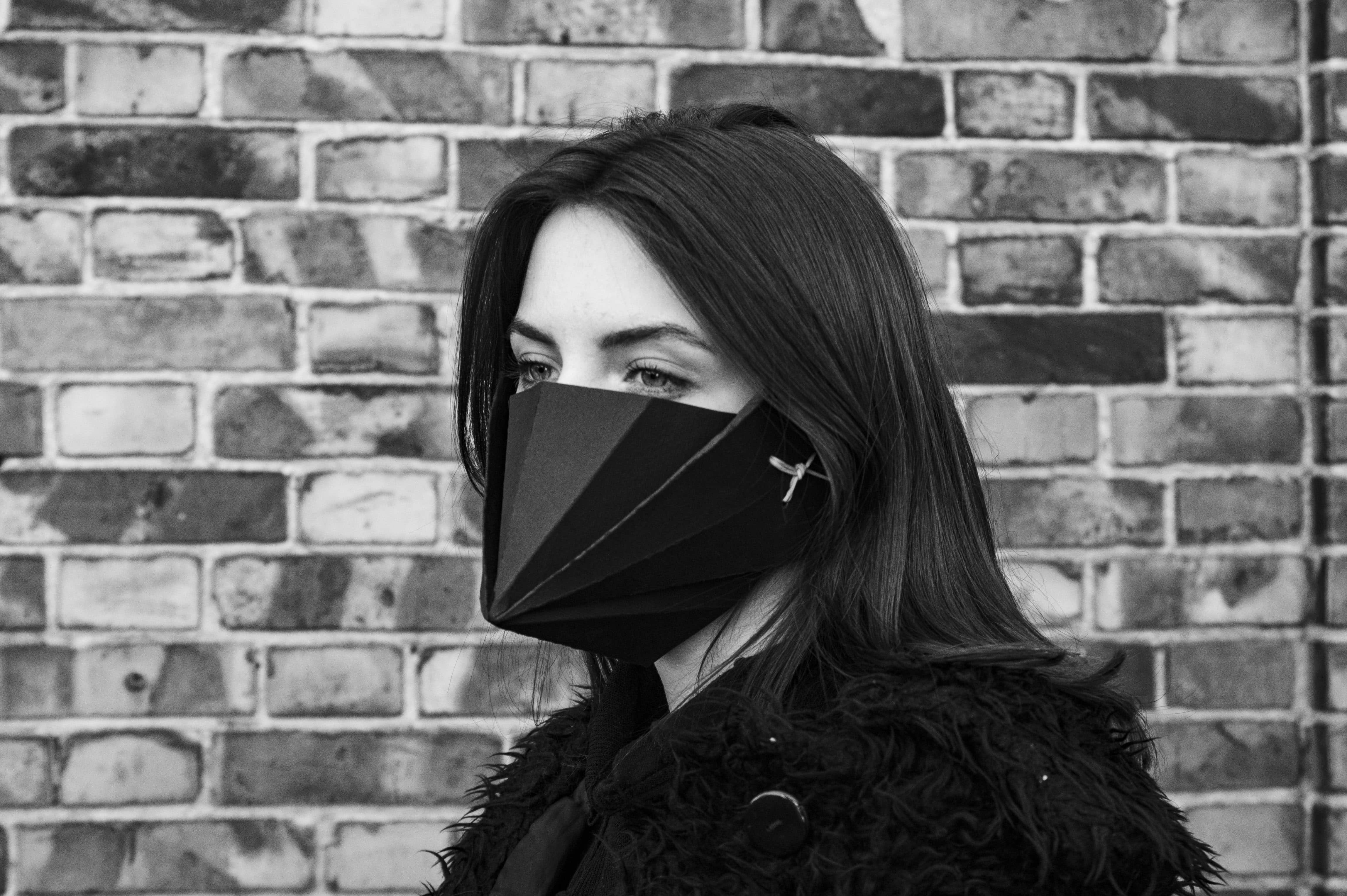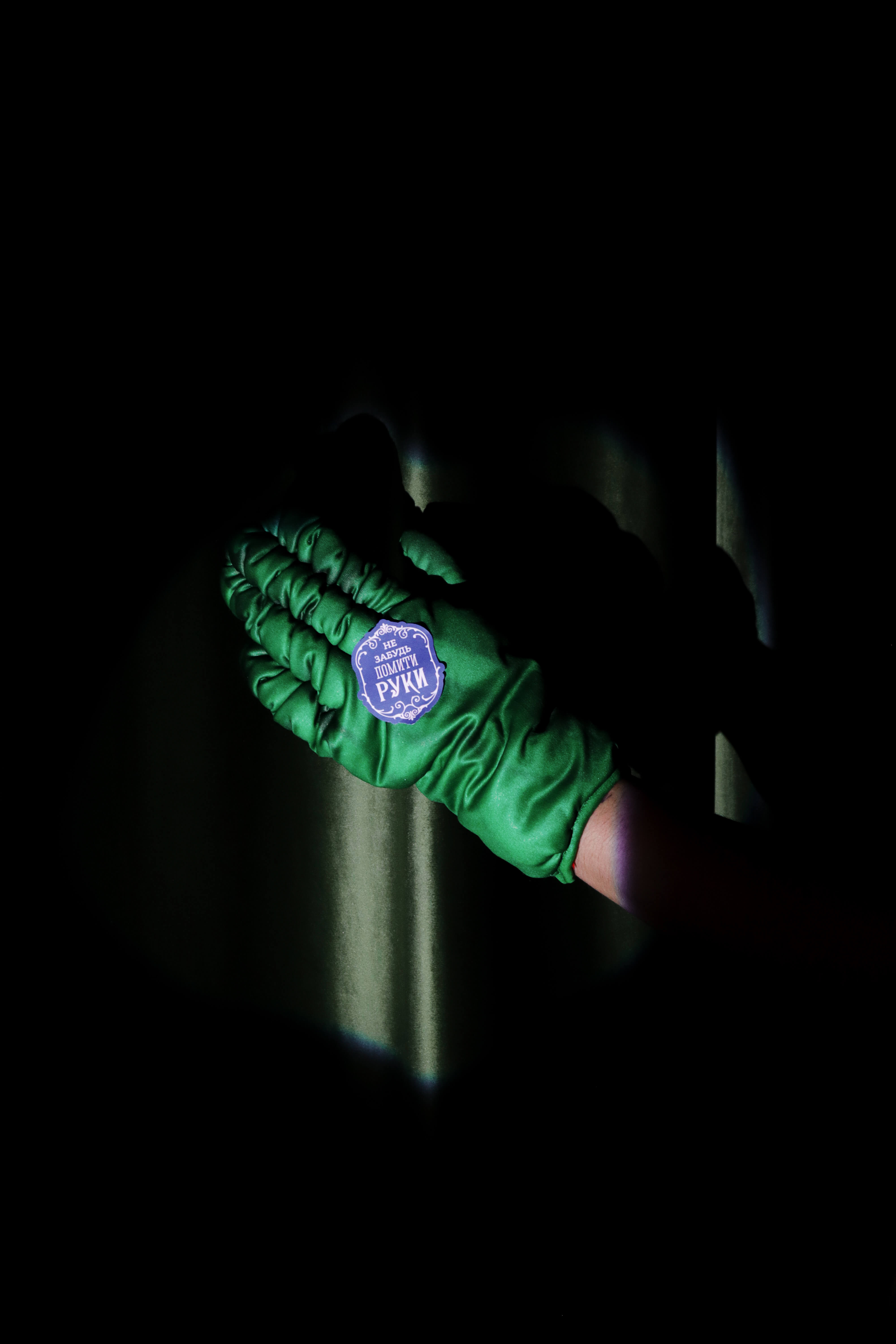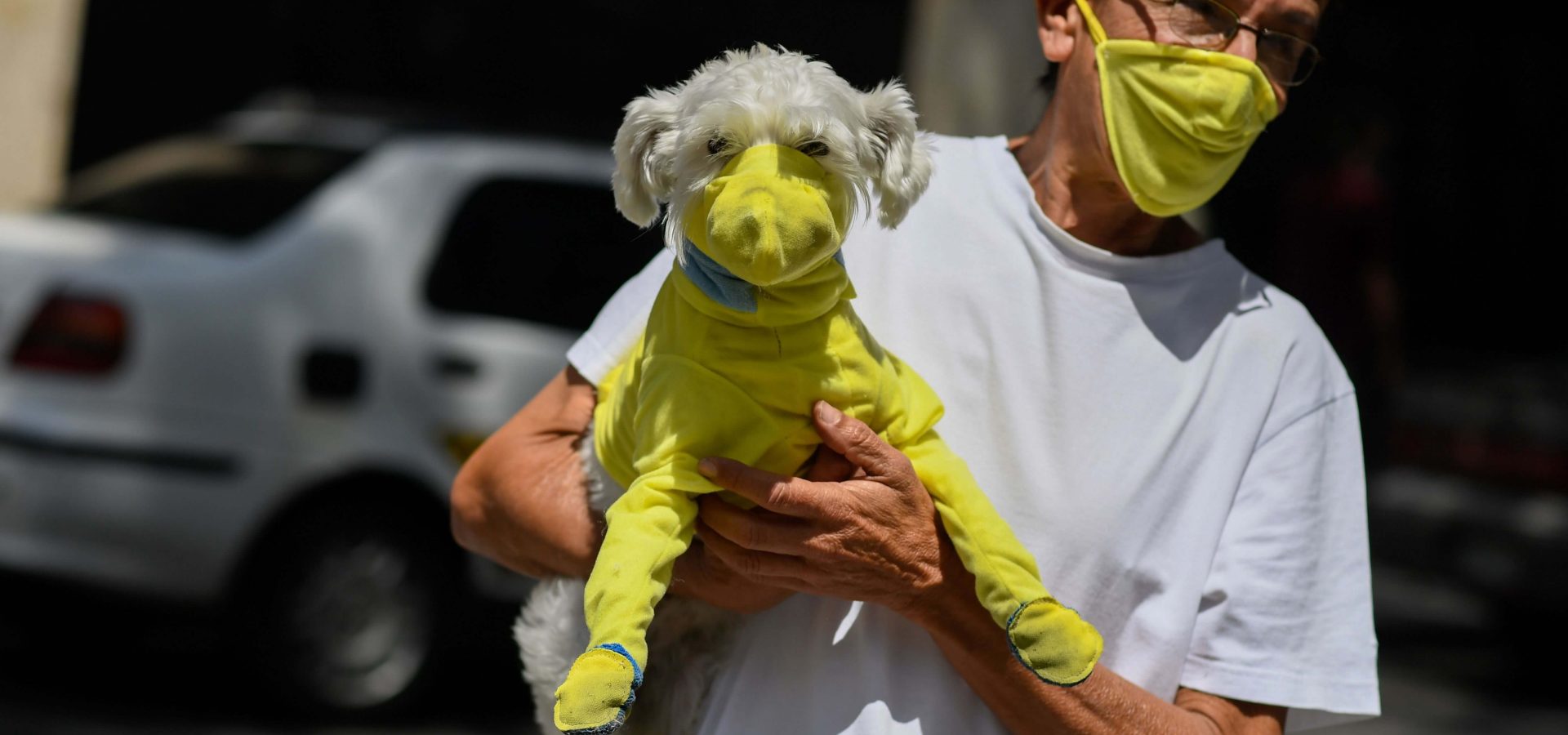
Can You Contract Corona from Animals and What Are the Dangers of Quarantine: 11 Strange but Pertinent Questions About COVID-19
Is the virus man-made?
It doesn’t look like it.
The ideas that SARS-CoV-2 was created in the Chinese laboratories first started circulating in late February. According to one of them, the virus is a biological weapon developed in Wuhan’s laboratory. The second idea was that the pandemic started because of an experiment of Chinese scientists that went out of control.
Most probably, the reason for these rumors was that there is the Institute of Virology in Wuhan. Scientists there specialize in virology and ecological microbiology, and also develop insecticides — chemical substances to protect plants from insects.
A number of experts have mentioned that the virus cannot be considered a bacteriological weapon. Despite the fact that as of March 31, 2020, it has already taken the lives of about 38,000 people, it still isn’t deadly enough to be a mass destruction weapon: for instance, the Ebola virus has a 25% to 90% mortality rate. The assumed mortality of SARS-CoV-2 is about 3.4% (varies considerably depending on age).
The theory about a lab leak seems more plausible, but is still doubtful. According to Jim LeDuc, head of the Galveston National Laboratory (US), who has worked with Wuhan for several years, their laboratory corresponds to the international safety protocols. In addition, the scientists have found no evidence that the RNA of the virus had been edited.
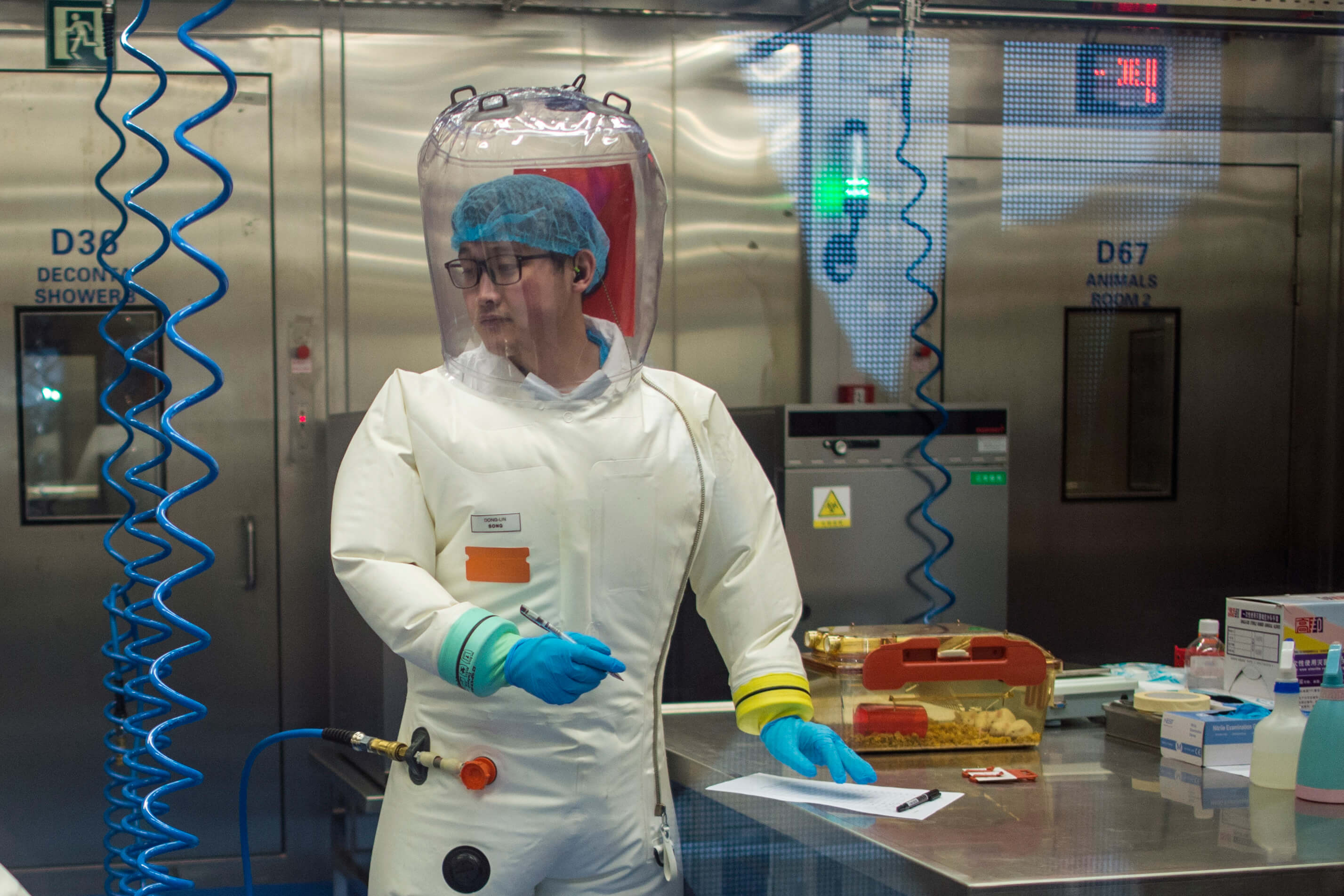
Employee at the P4 epidemiological laboratory in Wuhan, China. February 23, 2017. Photo: Johannes Eisele / AFP
Where did it come from then?
In January, the scientists decoded the SARS-CoV-2 virus genome. It turned out that its structure is 96% identical to the structure of the bat virus that was discovered nine years ago in the caves of Yunnan province, one thousand five hundred kilometers from Wuhan. It gave reasons to suggest that the virus mutated and was transmitted to humans from bats.
Later, there was a hypothesis that the mutation took place in two stages — first, the virus found its way into the bodies of snakes, and then was able to multiply in human cells — but it wasn’t confirmed. The scientists still don’t know how exactly humans contracted SARS-CoV-2.
Can you get it from pets?
Most likely, not.
In early March, in Hong Kong SARS-CoV-2 was found in a dog whose owner was hospitalized for COVID-19. The dog was quarantined for observation. This case gave reasons to think that the infection can be transmitted from humans to dogs — which means from dogs to humans, too.
Later, Hong Kong Agriculture, Fisheries, and Conservation Department clarified that minor traces of infection in the nose and mouth of the dog may be explained not only by the transmission of the virus from humans to dogs, but by ‘environmental contamination.’ The experts note that the dog has no symptoms of COVID-19 and that one case of infection is not enough to make conclusions about the role of dogs in transmission of SARS-CoV-2. Despite this fact, Hong Kong authorities asked the citizens to refrain from kissing dogs.
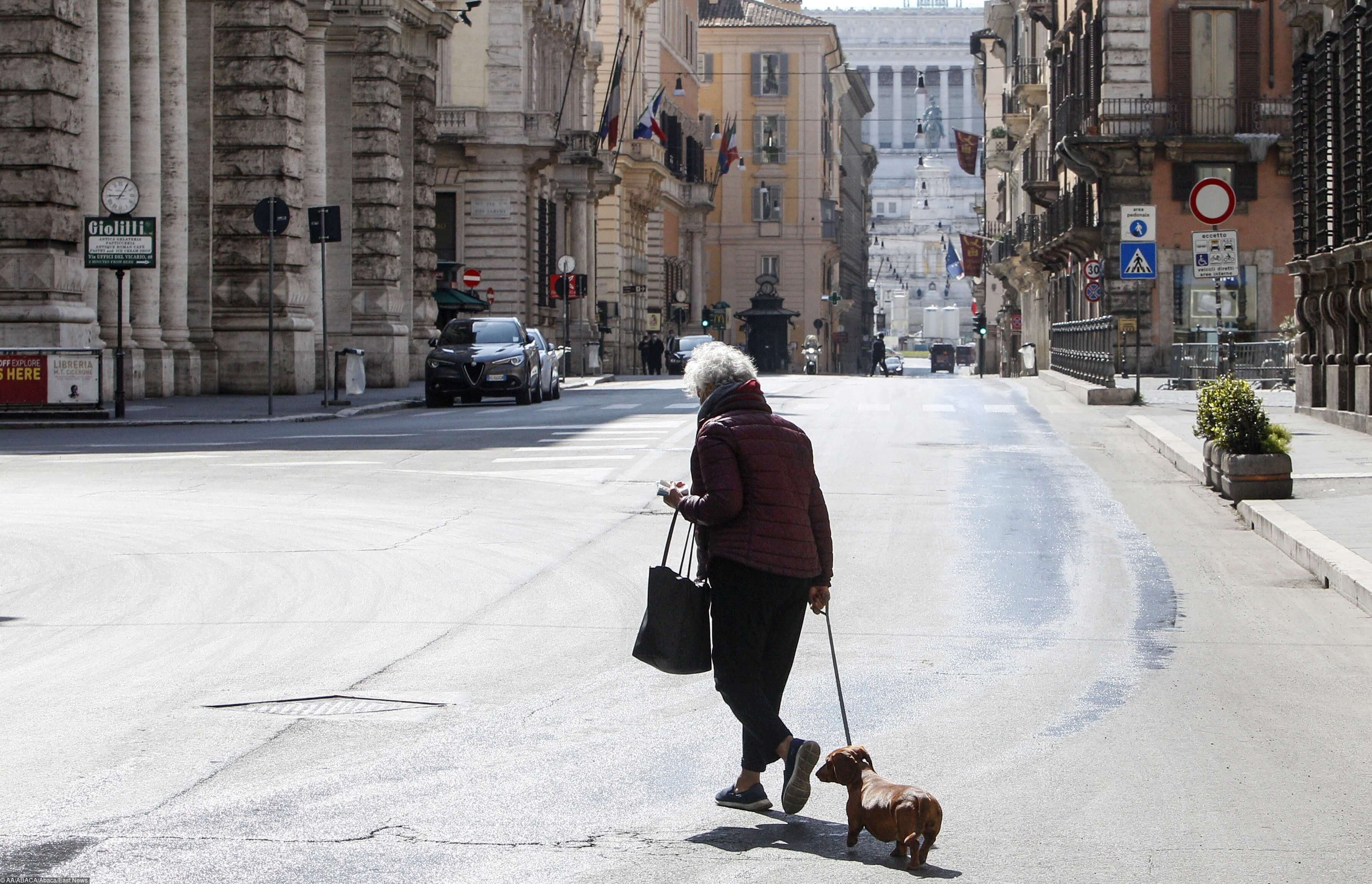
A woman is walking a dog on Via del Corso — the central street of Rome. The usually lively street is now empty. Italy, March 31, 2020. Photo: Riccardo De Luca / AA / Abaca / East News
In Belgium, a house cat contracted SARS-CoV-2 from her owner. She had vomiting, trouble breathing, and diarrhea, but after nine days she recovered. The cat was quarantined, like the dog from Hong Kong.
Scientists don’t know yet whether SARS-CoV-2 can be transmitted from cats to people. It is known that the virus can live on plastic for up to three days and on steel for up to a week (these numbers were obtained in lab conditions though). The virus can also lodge on pet fur — although, like other porous materials, it makes the transmission of the virus difficult.
In any case, you can’t be too careful: during the quarantine, try not to pet other people’s animals, and if you did — remember to wash your hands after.
They say there are two strains of COVID-19. Is that true?
We don’t know for sure.
SARS-CoV-2 mutates, as any virus does. In early March, Chinese scientists studied over one hundred specimens of the virus taken from patients in Wuhan and discovered two strains of the virus that they named L and S.
It is supposed that the first strain affected people in the beginning of the epidemic; and the second one appeared later — in early January. The good news is that the S strain is less aggressive, and researchers suppose that it is also more common than the L strain.
There is also bad news: the study done by Chinese scientists is criticized for a small sample size and ‘manipulative’ conclusions. Epidemiologist Nathan Grubaugh from the Yale School of Public Health thinks that despite the high speed of mutation of viruses, SARS-CoV-2 wouldn’t have had enough time to develop a second strain. And most likely, we are dealing with the same strain of the virus that caused the pandemic earlier this year.
COVID-19 is compared to the Spanish flu. Which one is more dangerous?
The Spanish flu was more dangerous — as was life one hundred years ago in general.
After the First World War, the world was in the grips of the Spanish flu pandemic. It became the largest in the 20th century and took the lives of almost 50 million people (the exact number is still unknown: authorities in Germany, Great Britain, France, and the US downplayed the morbidity). Many victims of the flu were young — aged between 20 and 40. Scientific observer Dan Vergano suggests that people aged between 40 and 65 were not as susceptible to the Spanish flu, as some of them had the so-called Russian flu (H3N8) as children.
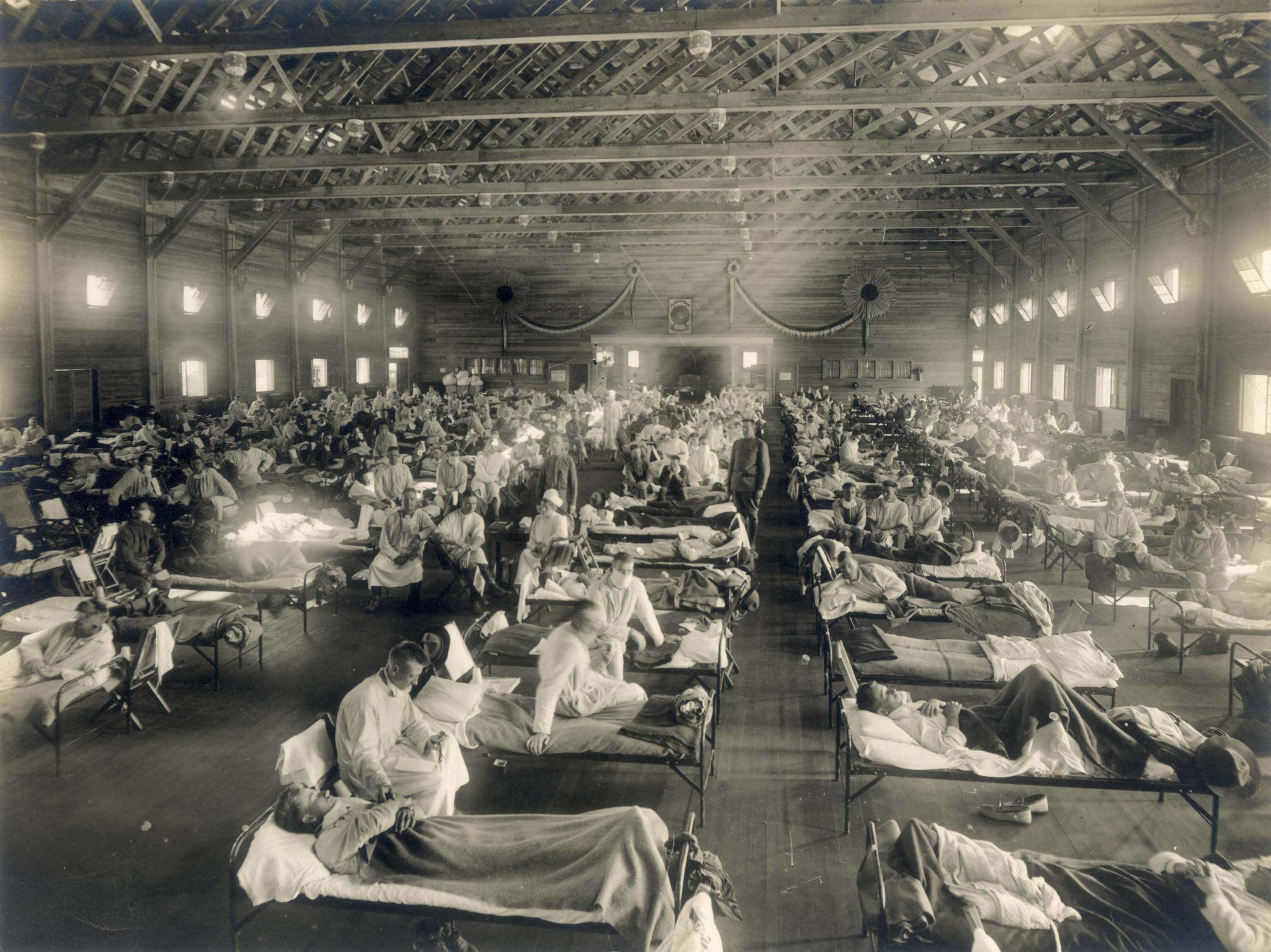
Emergency care hospital during the Spanish flu epidemic. Camp Funston, US
COVID-19 has a much smaller mortality rate compared to the Spanish flu: about 3% versus 10-20%. It is not only about how aggressive the virus itself is though. The La Pesadilla pandemic started after the First World War, when the resources of many European countries were depleted. In the early 20th century, Europe already had public healthcare (in Germany, the obligatory medical insurance for all workers was introduced already by Bismark) — but the war impacted this sphere as well. The high mortality rate was also due to much worse sanitary conditions compared to our times; besides, antibiotics — the main means used against pneumonia — were invented only ten years after.
Who is at risk, except the elderly?
People with cardiovascular and other chronic diseases — the more concomitant diseases, the higher the risk of death. For instance, according to Professor Walter Ricciardi, scientific adviser to Italy’s minister of health, coronavirus was the direct cause of death for only 12% of patients who died during the epidemic — and the others fell victim to concomitant diseases.
Smokers are also under fire — especially those who currently have lung problems. It is also known that there are more cases of death from pneumonia caused by SARS-CoV-2 among men: the experts say this is because men more often have an unhealthy lifestyle.
In any case, the experts are convinced that 80% of people who will get coronavirus will have it in a mild form.
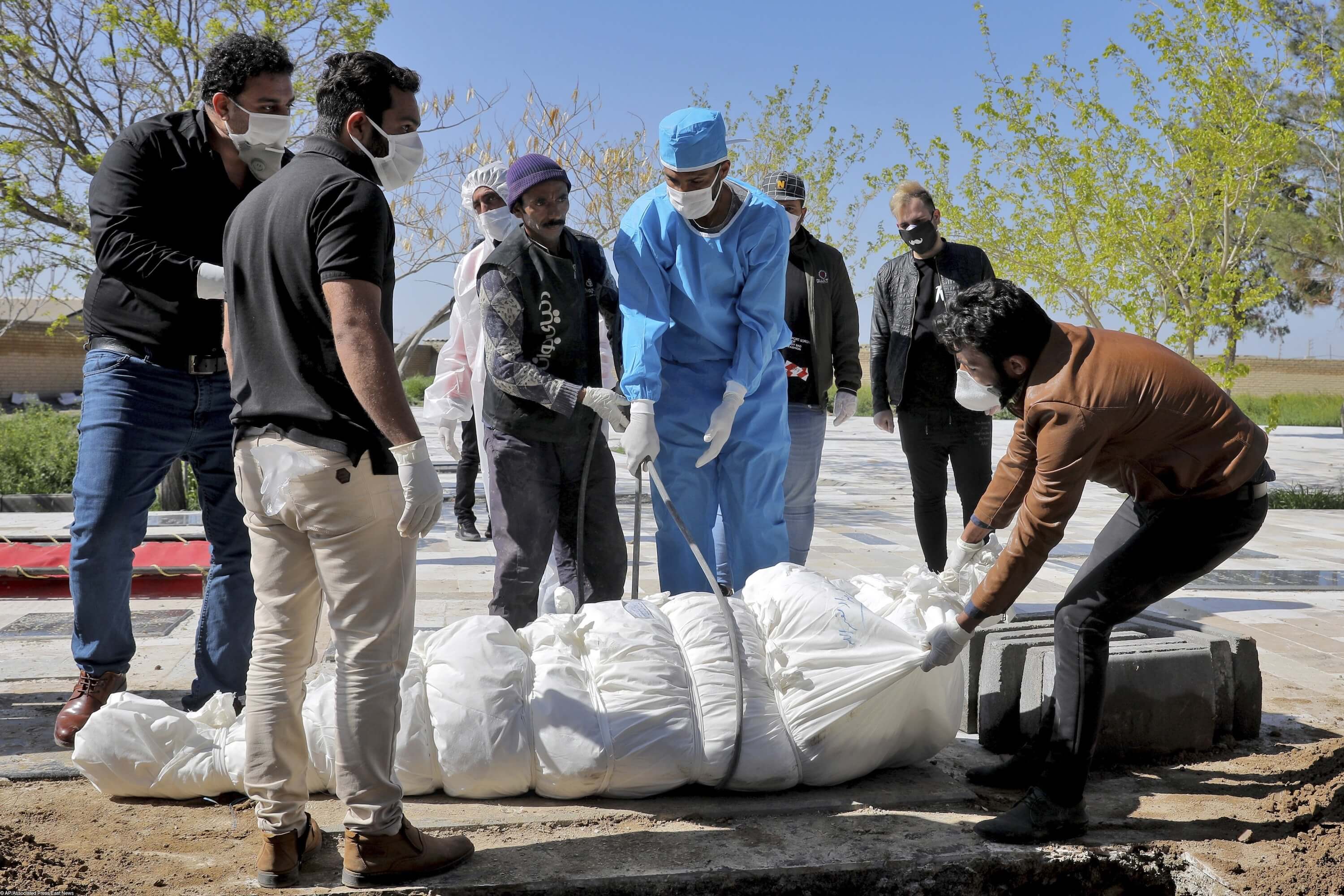
Funeral of a person who died of COVID-19 in a cemetery near Tehran, Iran. Mach 30, 2020. Photo: AP / Associated Press / East News
Can you get COVID-19 again?
Most likely, yes.
A group of Chinese scientists infected four rhesus macaques to find out whether they will be immune to reinfection. Three of them developed immunity (at the same time, independent scientific experts have not evaluated this study yet).
However, in early March, the Wuhan administration reported that 195 patients who were discharged from the hospital after being treated for COVID-19 contracted it again. Some experts explained it by saying those patients had not fully recovered the first time — however, later cases of reinfection were also reported in Japan. The patients there were completely healthy when they were discharged.
Luis Enhuanes, a virologist at the Spanish National Center for Biotechnology (CSIC), thinks that reinfection is the infection flaring up before the final recovery. However, scientists don’t know yet if this is true.
Should you stock up on products for the time of the quarantine?
Yes, but only in reasonable quantities.
Panic buying inevitably causes a deficit and the rise in prices. This happened, for instance, during Hurricane Harvey that hit the south-eastern part of Texas in 2017. Oil refineries in Houston temporarily stopped supplies of gasoline in the US — this was a predictable measure, but people started filling tanks of their cars in a panic, and gasoline prices in the country hit a two-year record.
During a hurricane or a flood, people have a clear understanding of what they will need if there is no electricity or water (there are even approximate calculations). However, it is still not known which sectors of the economy COVID-19 hits the most, and whether it makes sense to buy a lot of food and personal hygiene products.

People queuing for food during quarantine. Emilia-Romagna, Italy. Photo: Martino Lombezzi / Contrasto / East News
Steven Taylor, a professor at the University of British Columbia, and the author of The Psychology of Pandemics, says that ‘panic buying’ helps people feel in control. Handwashing seems like a very habitual action and a weak response to the world crisis — many feel that they need to do something unprecedented, proportionate to the scale of the pandemic.
Of course, it is better to plan purchases, so that one trip to the store would last you for at least several days — not to go out to the street too often. However, instead of taking home the fifth pack of toilet paper, think of the shopping list in advance and stick to it when you are in the store.
Do quarantine and isolation impact the psychological state of people?
Yes, they do.
American Psychological Association warns that the drastic change of lifestyle and decreased number of social connections may cause sadness, depression, and apathy; and restrictions on leaving home — cause anger against the officials who introduced it.
When a person loses control over the situation, they feel fear and anxiety. Increased anxiety may impact concentration, and cause sleep and eating disorders.
During social cataclysms, the media has also impacted the psychological state of people: for instance, people who closely followed the coverage of the Boston Marathon terror attack felt more stress than those who were impacted by the bombing.
There are ways of avoiding or managing the negative consequences of isolation. For instance, to deal with anxiety, the American Psychological Association recommends sticking to the rigid schedule of the day even during quarantine, keep in touch online with those you are close with, and remember that COVID-19 often occurs in a mild form.
It is important to maintain informational hygiene: try to spend less time on social networks, distract yourself from the news, and consume information only from reliable sources. For instance, to keep track of the situation, visit the WHO website (but not more than 1-2 times a day). To check the truthfulness of the information on the media you can use platforms that debunk fake news and myths about SARS-CoV-2.
Italians are singing on balconies of their apartments during quarantine
What is the most optimistic scenario for the COVID-19 situation?
Many experts have already spoken about coronavirus and its possible consequences. However, it is important to understand that at this stage of the pandemic the more exact the forecast, the more doubtful the expert. Experts who have authority concur that it is too early for specific social and economic forecasts: there is not enough data.
Marc Lipsitch, professor of epidemiology at Harvard University, thinks that right now we can’t even say for sure how the virus behaves in the summer when it gets warmer. There is a possibility that it will start spreading slower, the question is — how significantly. In addition, there is no certainty that it won’t hit twice as hard in the autumn, as it happened with the Spanish flu in 1918.

A beach in Tel Aviv after quarantine. The authorities in Israel allowed people to go out to the store or drugstore and to the hospital if necessary. They can’t go out into the street for other reasons. Restaurants and cafes in the country are closed. Tel Aviv, March 24, 2020. Photo: Jack Guez / AFP
Generally speaking, the most optimistic scenario is the following: the virus mutates and dies out. Doctor Larry Brilliant, who is famous for fighting smallpox and was a consultant for the 2011 movie Contagion, says that this is an opportunity — viruses mutate not only to become stronger. He does not advise hoping that we will get off this easily though.
According to the average forecast of Doctor Brilliant, billions of people will contract the virus, millions will die, and the world economy will sink into a major depression. This forecast is hardly optimistic. That’s why, let us wait until June — when it becomes clear whether we should hope for the summer sun to help us.
What is the most pessimistic scenario for the COVID-19 situation?
In early May, Harvard epidemiologist Marc Lipsitch scared everyone with one of the first gloomy forecasts: about 70% of the population, or up to 5.5 billion people, with contract SARS-CoV-2; the mortality will remain at the level of 1-2%, which means about 50-100 million people will die. Later, Lipsitch ‘took mercy’ and downplayed the morbidity forecast to 40-60% of the population.
It is difficult to make forecasts due to several factors. First, we don’t know whether you can contract the virus twice: if SARS-CoV-2 becomes seasonal for the next few years, the issue of immunity will become the most important.
Second, it is not yet clear how the virus impacts the bodies of those who recovered from it. Recently Bin Cao, MD, of the National Clinical Research Center for Respiratory Diseases in Beijing, reported that 7-12% of patients who recovered from COVID-19 are discharged with serious disorders of the cardiovascular system and blood circulation — which in the future may cause a surge in infarctions, strokes, and kidney problems.
Third, Lipsitch and other serious forecasting experts honestly admit that they don’t know where children will fit in this equation. Children under 9 years of age almost don’t get infected with COVID-10 and don’t die from it, for still unknown reasons.
In addition to the economic, there will be medical consequences — they are hard to forecast, but they will certainly be disappointing.
In addition, countries are introducing new prohibitions and increasing their role in governance. For instance, France fines those who violate quarantine for thousands of Euros. And China is successfully fighting the virus partially due to the fact that it plays freely with the personal data of its citizens. Having fewer rights and less privacy seem logical during a pandemic — but it is not clear whether countries will abandon the total control of their populations after it ends.
Most forecasts concur that it is just the start of it all for humanity, and we will be saved only by the vaccine which currently does not exist.
On the cover: A man with his dog during the coronavirus pandemic. Caracas, Venezuela, March 20, 2020. Photo: Federico Parra / AFP / East News
